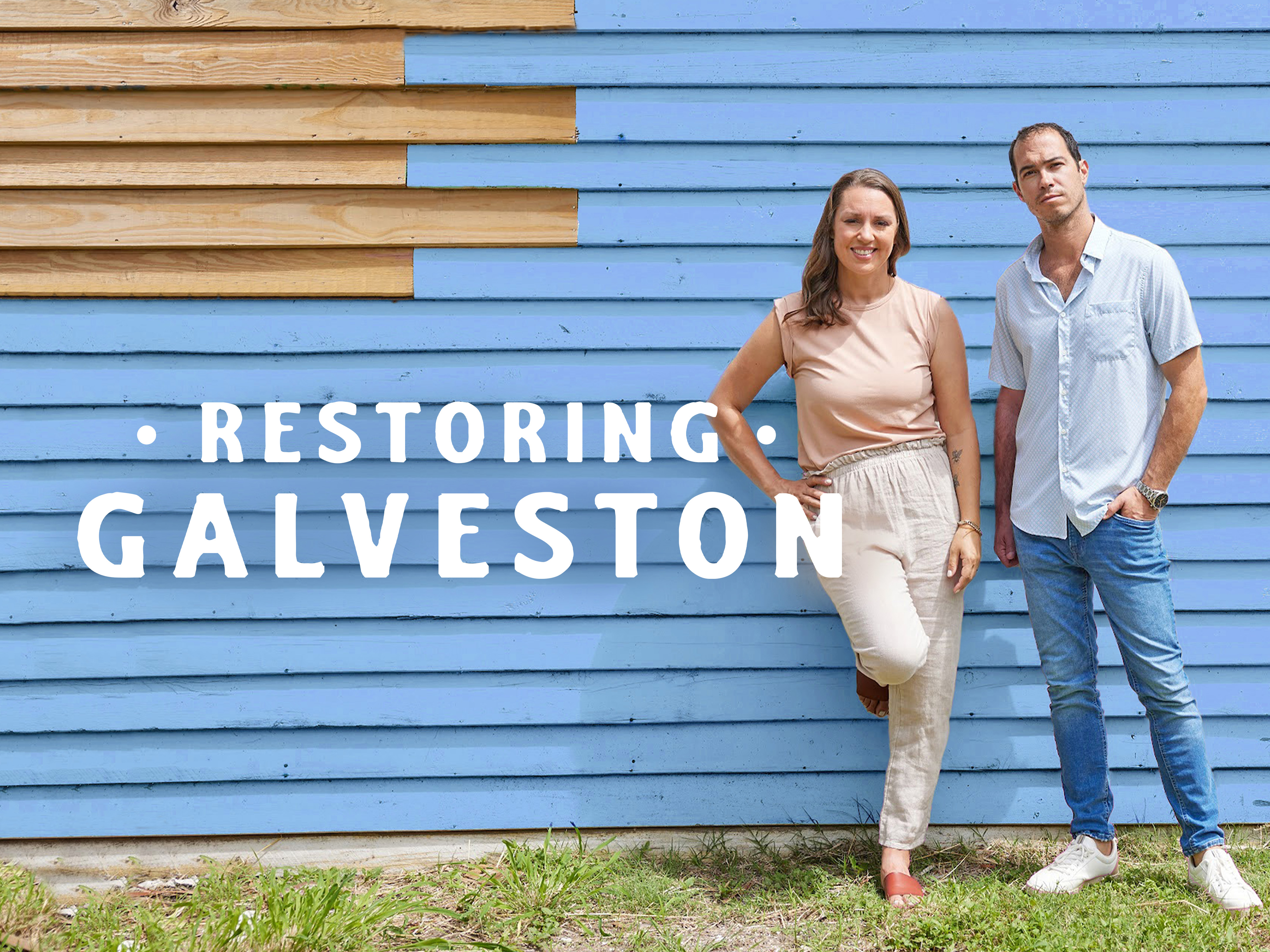Restoring Galveston House Addresses: Unlocking Island History
Galveston Island, with its windswept charm and storied past, is a place where history isn't just found in museums; it breathes through the very architecture of its homes. Yet, beneath the surface of its enduring beauty lies a silent challenge: the need for restoring Galveston house addresses. This isn't merely about correcting numbers on a mailbox; it's a profound act of historical preservation, community safety, and economic stability, ensuring that every structure on this resilient island can tell its true story.
The concept of "restoring" implies a return to an original, more desirable state after depletion or loss—a bringing back to what something once was, not necessarily making it better, but making it whole again. For Galveston's house addresses, this means meticulously piecing together fragmented histories, correcting discrepancies, and ensuring that the unique identity of each property is accurately reflected. It's a complex, vital undertaking that impacts everything from emergency services to property values, anchoring the island's present firmly to its rich, vibrant past.
Table of Contents
- The Enduring Charm of Galveston's Historic Addresses
- The Historical Tapestry: How Addresses Evolve and Get Lost
- The "Restore" Imperative: More Than Just Numbers
- The Process of Restoring Galveston House Addresses
- Community Involvement: A Collective Effort in Restoration
- The Economic and Cultural Impact of Restored Addresses
- Navigating the Challenges of Address Restoration
- A Future Defined by a Clear Past: Ongoing Restoration Efforts
The Enduring Charm of Galveston's Historic Addresses
Galveston, often referred to as the "Island City," boasts one of the largest and most well-preserved collections of Victorian architecture in the United States. Each house, with its intricate details, grand porches, and unique character, tells a story of resilience, wealth, and survival. These homes are not just structures; they are living testaments to the island's journey through hurricanes, economic booms, and cultural shifts. Central to their identity, and indeed their very existence, is their address. An address is more than just a navigational tool; it's a historical marker, a legal identifier, and a symbol of belonging. For residents and visitors alike, accurate and consistent addressing is fundamental to understanding and appreciating the island's unique heritage.
- Frannie And Matt Still Together
- Drake Naked
- Keith Urban Sober
- Quinnfinite Onlyfans
- Green Acres Gabor Sisters
Why Address Accuracy Matters
The importance of accurate house addresses extends far beyond historical curiosity. In a coastal community like Galveston, where natural disasters are a recurring threat, precise addressing is a matter of life and death. Emergency services—police, fire, and EMS—rely on accurate addresses to quickly locate individuals in distress. Every second counts during a medical emergency or a fire, and a confused or incorrect address can have tragic consequences. Beyond safety, address accuracy impacts a myriad of daily functions:
- Mail and Package Delivery: Ensuring residents receive essential correspondence and goods.
- Utility Services: Accurate billing and service provision for electricity, water, and gas.
- Property Records and Transactions: Clear titles, accurate property taxes, and smooth real estate dealings depend on precise addresses. This is a critical YMYL (Your Money or Your Life) aspect, as property ownership and financial transactions hinge on these details.
- Insurance Claims: After a storm, accurate addresses are vital for processing claims and receiving aid.
- Census Data and Urban Planning: Governments use address data for population counts, resource allocation, and future development plans.
- Tourism and Navigation: Visitors rely on correct addresses to find hotels, restaurants, and attractions, contributing to the local economy.
Therefore, the process of restoring Galveston house addresses is not a luxury but a necessity, underpinning the very fabric of community life and economic vitality.
The Historical Tapestry: How Addresses Evolve and Get Lost
Galveston's address system, like many historic cities, has evolved over centuries, reflecting periods of rapid growth, devastating natural events, and administrative changes. Early addressing systems were often informal, based on landmarks or prominent residents. As the city grew, more structured systems were implemented, but these were not always perfectly consistent or meticulously documented. The Great Storm of 1900, which decimated much of the island, represents a pivotal moment. Entire blocks were wiped clean, structures rebuilt, and in the chaos, original address designations were often lost, misassigned, or simply never re-established accurately.
- National Lampoon 80s National Lampoon Beverly Dangelo
- Best Dress At The Oscars
- Nicki Minaj Leak
- Rebecca J Onlyfans
- Carl Bernstein News
Over the decades, subsequent renumbering initiatives, subdivision of large lots, conversion of single-family homes into multi-unit dwellings, and even simple clerical errors have contributed to the fragmentation of address data. Properties might have multiple historical addresses, or an address might refer to a different physical location than intended. This creates a complex puzzle, where the act of restoring Galveston house addresses becomes a historical detective mission.
Post-Storm Challenges and the Need for Restoration
Every major hurricane that has impacted Galveston—from the 1900 Storm to Hurricane Ike in 2008—has presented unique challenges to the address system. Post-storm recovery often involves demolition, rebuilding, and re-platting of land, which can inadvertently erase or alter existing address information. Damaged records, displaced residents, and the urgency of reconstruction can lead to temporary or informal addressing solutions that later become permanent inaccuracies. This cumulative effect over more than a century means that many properties on the island may have an address that is either technically incorrect, inconsistent with historical records, or simply inefficient for modern mapping and navigation systems. The need to bring these addresses "back to a former, more desirable condition" is paramount for the island's ongoing recovery and future resilience.
The "Restore" Imperative: More Than Just Numbers
When we talk about restoring Galveston house addresses, we are invoking a principle that goes beyond mere data entry. As the definition implies, "restore implies a return to an original state after depletion or loss." This isn't about assigning new numbers arbitrarily; it's about uncovering the authentic, historical, and most functionally accurate address for a property. It's about bringing back into existence a piece of its identity, ensuring that the address truly reflects its place in the urban fabric and historical narrative. This deep understanding of "restoration" is crucial for maintaining the integrity of Galveston's unique heritage and ensuring the safety and efficiency of its infrastructure.
The "restore" imperative also touches upon the concept of trustworthiness (part of E-E-A-T). When addresses are accurate and consistent, it builds trust in public services, property records, and the overall administrative efficiency of the city. Property owners can trust that their deeds accurately reflect their physical location, emergency responders can trust their navigation systems, and historical societies can trust the data used for preservation efforts. This foundation of trust is essential for a thriving community.
The Process of Restoring Galveston House Addresses
The systematic process of restoring Galveston house addresses is a multi-faceted endeavor that requires collaboration between city departments, historical societies, property owners, and GIS (Geographic Information System) specialists. It's a meticulous journey of research, verification, and implementation, designed to correct historical inaccuracies and establish a robust, future-proof addressing system. The goal is to "bring back to a former, more desirable condition" the address data, ensuring its accuracy and utility for generations to come.
Research and Verification: The Foundation of Restoration
The initial phase involves extensive historical research. This includes:
- Archival Records: Pouring through old city directories, Sanborn Fire Insurance Maps (which meticulously detail building footprints and addresses over time), historical plat maps, and early census records. These documents provide invaluable clues about original street names, numbering conventions, and property divisions.
- Deed Research: Examining property deeds and legal descriptions, tracing ownership changes and property boundaries back through time. Discrepancies between legal descriptions and physical addresses are often uncovered here.
- Oral Histories and Local Knowledge: Consulting long-time residents, local historians, and community groups who possess invaluable anecdotal information about specific properties and neighborhood changes.
- GIS Mapping and Field Verification: Utilizing modern GIS technology to overlay historical maps with current aerial imagery and street grids. This allows for visual identification of discrepancies. Field teams then physically visit properties to verify existing numbers, assess physical structures, and document any inconsistencies. This blend of historical expertise and modern technology is critical for authoritative and accurate restoration.
- City Planning and Permitting Records: Reviewing building permits, demolition records, and subdivision plats to understand how properties have been altered or reconfigured over time.
Each piece of information is cross-referenced and triangulated to build a comprehensive picture of a property's address history. This rigorous verification process ensures the expertise and authoritativeness of the restored data.
Community Involvement: A Collective Effort in Restoration
While the technical aspects of restoring Galveston house addresses are handled by experts, the success of such an initiative heavily relies on community engagement. Property owners are often the first line of defense against address inaccuracies and can provide crucial insights into their own property's history. Public awareness campaigns, workshops, and accessible platforms for reporting discrepancies are vital. Local historical societies, neighborhood associations, and preservation groups play a pivotal role in advocating for and assisting with these efforts. Their collective knowledge and passion for Galveston's heritage are indispensable resources.
Engaging the community also fosters a sense of shared ownership and pride in the island's historical assets. When residents understand the "why" behind address restoration—the safety, the historical preservation, the property value implications—they are more likely to participate and support the initiatives. This collaborative approach ensures that the restoration efforts are not just technically sound but also socially accepted and sustainable.
The Economic and Cultural Impact of Restored Addresses
The ripple effects of restoring Galveston house addresses extend far beyond administrative convenience. They touch upon the very economic health and cultural identity of the island. Accurate addresses contribute to a more efficient and transparent real estate market, bolster tourism, and reinforce the island's unique historical brand.
Preserving Legacy and Enhancing Property Value
For a city that prides itself on its historical architecture, accurate addresses are fundamental to preserving its legacy. Each restored address is a thread rewoven into the historical tapestry of the island, making it easier for future generations to research and appreciate their heritage. From an economic standpoint, clear and correct addresses enhance property values. They reduce ambiguity in property transactions, streamline insurance processes, and make properties more attractive to potential buyers. Lenders and insurers rely on precise addressing for accurate risk assessment and valuation, directly impacting the "Your Money" aspect of YMYL. A property with a verified, historically accurate address often holds more intrinsic and market value, reflecting its clear identity and place within the city's documented history.
Furthermore, for businesses, accurate addresses are paramount for visibility and customer access. A restaurant, shop, or bed-and-breakfast with a clearly defined and easily navigable address benefits from improved customer experience and higher foot traffic, contributing directly to the local economy.
Navigating the Challenges of Address Restoration
Despite the clear benefits, restoring Galveston house addresses is not without its hurdles. The sheer volume of historical data, much of it fragmented or handwritten, presents a significant challenge. The process is labor-intensive and requires specialized expertise in historical research, cartography, and GIS. Funding for such comprehensive projects can also be a constraint, requiring grants, public-private partnerships, and sustained municipal commitment.
Another significant challenge lies in managing the impact of address changes on current residents and businesses. A change, even if it's a "restoration" to a more accurate state, can cause temporary disruption to mail delivery, utility billing, and personal records. Effective communication strategies are essential to inform affected parties, explain the reasons for the changes, and provide clear guidance on how to update their information. This requires a delicate balance between historical accuracy and practical convenience, emphasizing the long-term benefits over short-term inconveniences.
Legal complexities can also arise, particularly when addressing changes impact property boundaries or shared access points. These situations require careful navigation through city ordinances, property law, and sometimes, direct negotiation with affected property owners. The expertise and authority of city planning departments and legal counsel are critical in these instances to ensure a smooth and legitimate restoration process.
A Future Defined by a Clear Past: Ongoing Restoration Efforts
The work of restoring Galveston house addresses is not a one-time project but an ongoing commitment. As the island continues to evolve, with new developments, subdivisions, and changes in property usage, the address system must remain dynamic and adaptable. Continuous monitoring, regular updates, and proactive management are essential to maintain the accuracy achieved through restoration efforts. This includes integrating new construction addresses seamlessly, resolving new discrepancies as they arise, and ensuring that all digital and physical mapping systems are consistently updated.
Investing in robust GIS infrastructure and training for city staff will be crucial for the long-term success of these initiatives. Partnerships with academic institutions and technology companies can also bring innovative solutions to data management and visualization. Ultimately, a well-maintained and accurate addressing system is a testament to a city's commitment to its history, its residents' safety, and its economic prosperity. It's about ensuring that Galveston's unique story can continue to be told, one address at a time, clear and true for all to find.
The journey of restoring Galveston's house addresses is a powerful metaphor for the island itself: a continuous process of rebuilding, remembering, and reaffirming its identity. By diligently bringing back what was lost or obscured, Galveston ensures that its past remains a clear and guiding light for its future.
Conclusion
The intricate task of restoring Galveston house addresses is far more than a bureaucratic exercise; it is a fundamental act of preserving history, enhancing public safety, and securing economic stability for the Island City. We've explored how historical events, particularly devastating storms, have fragmented address data, and why the meticulous process of "restoring" these addresses—bringing them back to their accurate, original, and most desirable state—is so critical. From bolstering emergency response times to streamlining property transactions and enriching the island's unique historical narrative, the impact of this work is profound and far-reaching.
The success of these efforts hinges on a blend of expert historical research, advanced mapping technologies, and invaluable community collaboration. As Galveston looks to its future, a clear and accurate understanding of its past, anchored by precise house addresses, will continue to be a cornerstone of its resilience and charm. If you're a Galveston resident, consider exploring your own property's address history—you might uncover a fascinating story! Share your thoughts or experiences with historical addresses in the comments below, or learn more about local preservation efforts through the Galveston Historical Foundation's resources.

Restoring Galveston (2022) - Titlovi.com

Historic home from Magnolia's 'Restoring Galveston' for sale

Historic home from Magnolia's 'Restoring Galveston' for sale